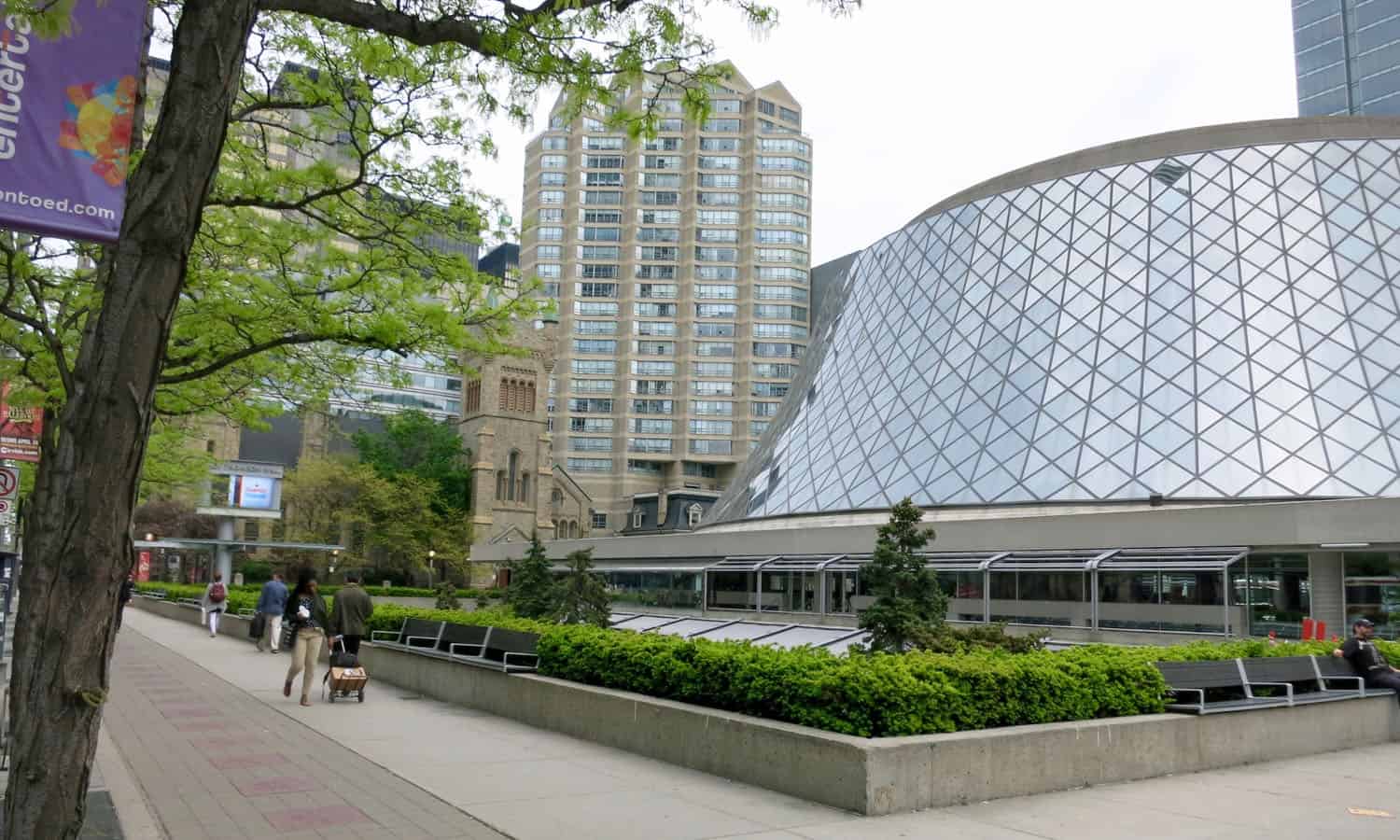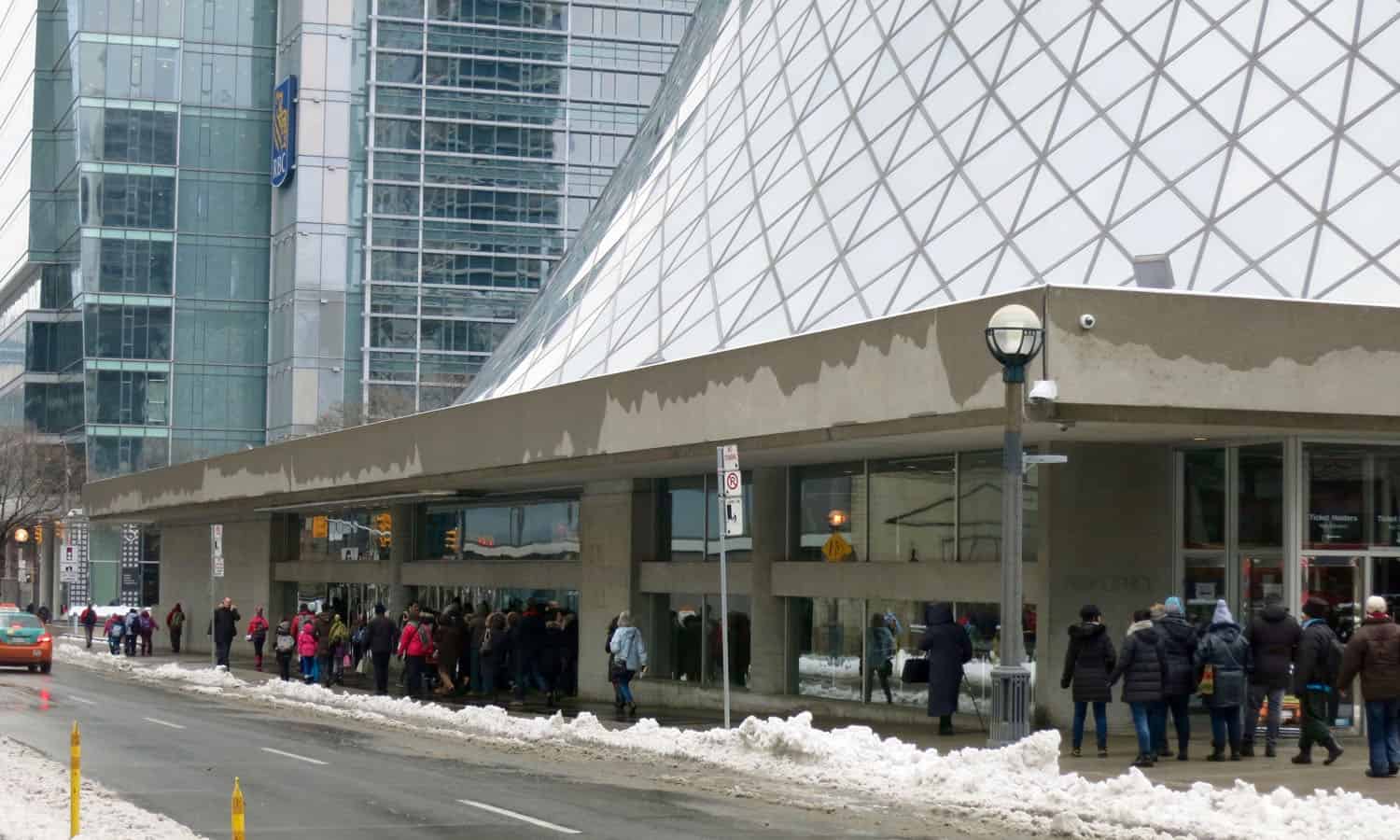Roy Thompson Hall
Roy Thomson Hall, a concert hall in downtown Toronto, is a mature work of Canada’s most renowned twentieth century architect, Arthur Erickson. Executed in collaboration with Mathers and Haldenby Architects and others, it is a significant work of the Late Modern Movement within Ontario. As the home of the Toronto Symphony Orchestra and the Toronto Mendelssohn Choir, Roy Thomson Hall has been associated with the city’s musical and cultural history, since it opened in 1982.
Originating in a decision in 1967 to replace the city’s aging Massey Hall (1894), the project for New Massey Hall would take a further 15 years to come to fruition. The location was on King Street West, then on the western edge of downtown Toronto, a site of abandoned railway lines.
It was conceived as the first phase of a major urban redevelopment that was to extend westward. As a result of a $4.5 million donation from the Thomson family, the concert hall was named after newspaper magnate Roy Herbert Thomson, first Baron Thomson of Fleet.
Roy Thomson Hall is a grand, oval concert hall, surrounded by a multi-storey glazed foyer, and set above four stories of support spaces and underground parking. The building’s square base, just a single storey at Simcoe Street, is characterized by a continuous, bold, concrete fascia, with abundant glazing below. Above the base, rises a truncated cone with a uniform concave curve, capped by a flat roof. The uniformly curved surface is comprised of glazing in repeated diamond and triangular shapes. A sweeping, steel-tube skeleton supports the curving glazed curtain of the exterior wall. With its draped silhouette and its glazed curtain, reflective by day and transparent by night, Roy Thomson Hall is a distinctive visual landmark within downtown Toronto. As an object within a heterogeneous, urban cultural landscape, the building achieves a sense of civic monumentality in its setting.
As described by Arthur Erickson, “Roy Thomson Hall was conceived as an enormous acoustic instrument.” The acoustician was Theodore J. Schultz of Bolt, Beranek and Newman Inc. At the heart of the building is the oval auditorium, originally with a capacity of over 2,800 seats. The hall is 2785 sq.m. with a ceiling height of 24m. The main floor had continental seating, above which were projecting mezzanine sections arranged in a horseshoe configuration. Reflective acrylic discs and retractable fabric banners permitted the control of the acoustics. The focal point of the hall is an organ built by Gabriel Kney.
The auditorium features double walls in order to reduce noise and vibration transmission. The surrounding lobby is a multi-storied, interconnected space comprised of concrete columns, platforms and stairs. Francisco Kripacz designed the buildings interiors, and the lobby was comprised of mirrored walls, stainless steel handrails, and a deliberately understated, monochromatic colour palette. Enhanced by views of the city, which acts as a backdrop, the arrival experience is dramatic, elegant, and glamorous.
To the north, the building is separated from King Street by a sunken garden. The Dunington-Grubb Court is comprised of a terrace, reflecting pool and gardens. The court has since been integrated with the City’s underground pedestrian PATH system.
The project garnered a Canadian Architect award of excellence in 1977. Roy Thomson Hall was recognized by the City of Toronto in 1992, when it was added to the Inventory of Heritage Properties. At ten years old, it was the youngest property listed at that time. The building was subsequently designated under the Ontario Heritage Act.
In 2002, Roy Thomson Hall was the subject of a major renovation by Kuwabara Payne McKenna Blumberg Architects. The main goal of the project was to improve the acoustics of the concert hall by taking advantage of the latest developments in acoustical engineering.
Roy Thomson Hall continues to be associated with the musical and cultural history of Toronto, principally as the home of the Toronto Symphony Orchestra and the Toronto Mendelssohn Choir, but also for performances by many Canadian and international performers. The sidewalks at Roy Thomson Hall are the home of Canada’s Walk of Fame, described as the “foremost honour of cultural excellence in Canada.”







